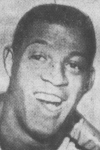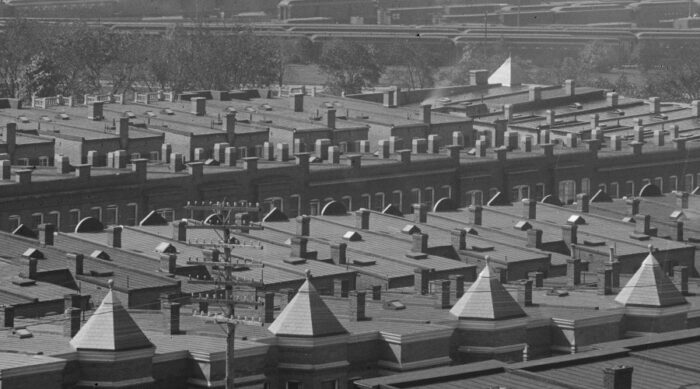
I ended last week with a – rather unsatisfactory – recounting of the African Americans who lived in Duddington.Today I want to look at what happened to the area. The four sisters who lived in the house in 1880 all died over the next 15 years. The last to die was Jane Carroll. By then, the house she had lived in most of her life was no more, having been sold about 10 years before her death.
In 1890, with the land cleared and in the hands of Archimedes Heckman, plans were filed to created a new street through the middle of the square, lined left and right by houses. Since Heckman was from Philadelphia, he planned to “carry out various Philadelphia ideas” in their construction, according to the July 26 Washington Evening Star. The article continues:
There will be eight or ten groups of houses, each having a distinct architectural effect of its own, but making one harmonious whole. The interior arrangements will be good and the houses will be finished in hard natural woods. One of the new ideas will be seen in the second-story chambers, where a stationary wardrobe and washstand will cover nearly the whole side of a room. This peculiar piece of stationary furniture is in reality two large wardrobes, each with its separate door, the one handsomely carved and the other a full length, bevel edge mirror extending to the floor, between which is a marble wash-stand, with another large mirror in the rear.
Heckman rather grandly named the street after himself, even though he ended up only building one set of houses along First Street. The houses on the interior street were built over the next few years for James Meriwether and Milton P. Caldwell, and were described in an 1896 ad as being “very desirable” as well as “open, airy, fine, new.”
By 1900, the houses were all full of skilled laborers, with a smattering of clerks thrown in for good measure. The inhabitants were overwhelmingly white. Only a handful of houses had African American live-in servants. This would remain the case until about the First World War.

In fact, the most exciting thing to happen on Heckman was the arrest of one young miscreant who claimed to live there: Alfred Spivey. Young Spivey, along with his neighbor Leo Hancock, had gone into various congressional offices, claiming to be selling newspapers in order to raise money for their baseball team, the Congressional Sluggers.
Several congressmen fell for this, and when their papers were not forthcoming, they had the two young men arrested and dragged before Judge DeLacey. The two young men admitted their guilt, and that they would not be able to pay restitution, having squandered their ill-gotten gains on “candy, chewing gum, and trips to picture shows.” They were sentenced six months of probation and allowed to go home.
After the First World War, the street had changed. It did not change in the type of occupations that its inhabitants pursued, which remained overwhelmingly skilled laborers; at this time, the majority of residents were African American. By the beginning of the great Depression, Heckman was almost 100% Black, as only two white families lived there. This would remain the case until after the Second World War.
In the late 1950s, four investors took notice of the quiet street just south of the Capitol. They began buying up the houses, and within two years had bought 30 of the 52 that lined the street. A Washington Post article published on October 8, 1960, describes the process:
In the case of Heckman st, tired houses were purchased at prices that averaged out under $10,000 and were completely gutted and redone to provide modern living quarters. Only the walls and floors were kept intact. The front door was widened with Morgan’s frames; windows and frames were replaced; brick steps were added in front and enclosed patios in the rear.
The restored houses were a hit, and within ten years, a neighborhood block party was started, an annual event that has been going on for 50+ years now. An article in the Post published to mark its 50th anniversary mentioned some of its more famous residents, starting with the basketball star Elgin Baylor, and including Representatives Hared Huffman and Tom Udall, as well as – more recently – Beto O’Rourke. Along the way, the name of the street had been changed from Heckman to Duddington, in honor of the long-gone mansion.
